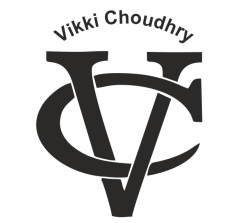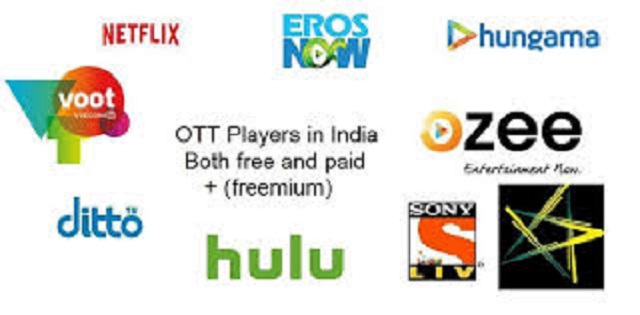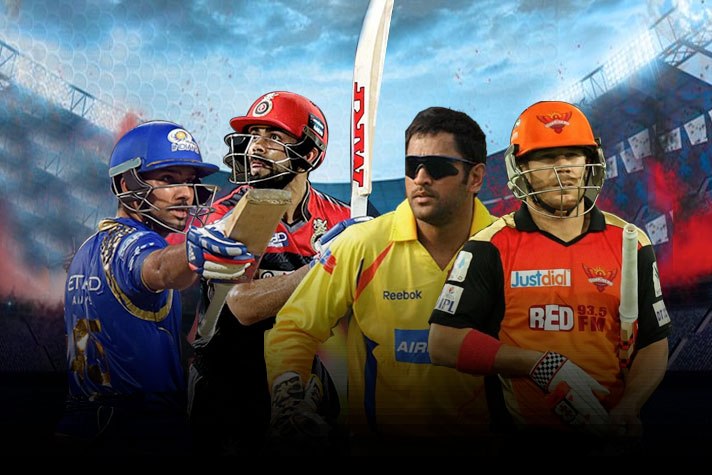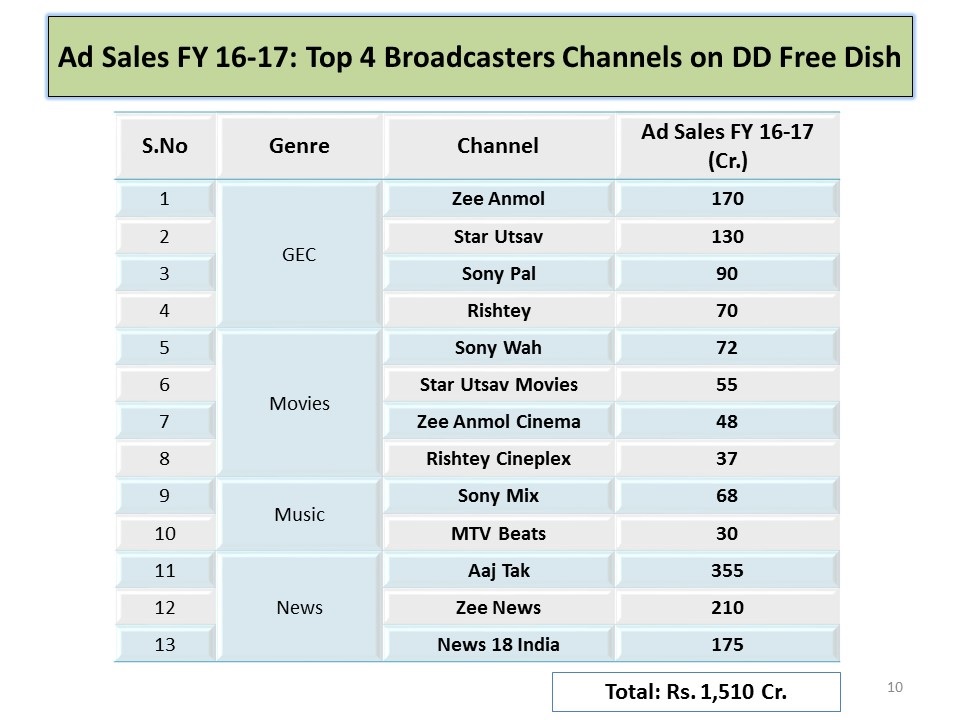Comments on the consultation paper issued on 12.11.2018 by the Authority on Regulatory Framework for Over-The-Top (OTT) Communication services.
The issues are related to regulatory imbalance between Telecom Service Providers (TSPs), Distribution Platform Operators (DPOs) vis-à-vis the OTT players, that are mushrooming in absence of any registration and regulatory guidelines to follow, while are providing services that can be regarded as same/similar to services offered by TSPs and DPOs. Whereas as per the aforesaid consultation paper its therein stated “ Presently, there is no globally accepted definition of OTT services. Governments, regulatory agencies, international agencies and other forums have adopted varying definitions depending on the context before them.
Hence it becomes imperative to make a classification of OTT ( Over -The- Top ) as:
- OTT Communication Services; OTT VoIP, OTT Messaging, etc. ( WhatsApp, Skype, Viber etc.)
- OTT Television Services; OTT IPTV (Internet Protocol Television) Netflix, HotStar, SonyLiv, etc.

However these OTT IPTV services have been proliferating at a very rapid pace and have become a part of life of a large sections of society in India. These are the services where the subscribers can avail the channels and content through internet on their mobile handset/computer or any digital display device through an application (app) e.g. Netflix, Amazon Prime, Hotstar, Voot, ZEE5, Sony Liv etc. With advent in the technology, now the subscribers are even streaming and projecting the content available through OTT IPTV from their mobile handset on the television screens. In this context it is pertinent to point out that unlike other broadcasting services, no content regulation is applicable on OTT IPTV services and as a result thereof the content being delivered through such services is totally unregulated and there have been lot of complaints that in certain OTT IPTV services the content being shown is not compliant with the statutory advertising and programing code stipulated by the Government.
In this context it may be mentioned that for broadcasting any content by a TV channel, permission under Up-linking and Downlinking Guidelines is required to be obtained from the Ministry of Information and Broadcasting and WPC, Dept. of Telecommunication. The permission granted under the Up-linking and Downlinking Guidelines and other licenses and permissions by MIB stipulate that every broadcaster and distribution platform such as DTH, Digital Cable, IPTV, HITS etc. would comply with the advertising and programme code(s) as enumerated in the Cable Television Network Regulations Act 1995 and the Rules made thereunder in order to ensure that the program being shown by the broadcasters on their channel are compliant with the stipulations/ restrictions so provided in the said code.
As stated hereinabove, the content provided/delivered through these OTT IPTV services has no control as these content are not regulated by any type of content code as prescribed in Cable TV Act 1995. The content shown to the people by these OTT IPTV services are vulgar and pornographic content is being made available freely through these OTT IPTV services without any restriction.
This has resulted in a shift of viewers (especially youth and adolescents) moving towards vulgar and lascivious content rather than normal socially acceptable content that can be watched in the presence of family. These OTT IPTV content is consumed more in privacy. Only instrument required to access OTT IPTV content is a smartphone/computer/any digital display device. As a result we can see huge increase in number of crime against women, girl child rape, rape cases against women incidents which is the direct effect of this lascivious content freely available on these OTT IPTV distribution platforms.
OTT IPTV Services are now mainstream for Television and Public Exhibition
Over the last 3 years the OTT mode of content delivery has become mainstream for Television as well as Public Exhibition. Major OTT IPTV providers now provide for up to 600 TV channels to a population base of over 400 Million active viewers via 4G networks as per data provided by the networks. In addition to the TV channels, the OTT IPTV service providers now have a very large amount of “Original Content”.
Original Content Exhibition to Public are in blatant violation of various Acts of Parliament, CBFC certification with appropriate brackets for Adults or universal viewing, and all MIB regulations on Content guidelines or self-certification.
As a result there is a very rapid growth in so called “Original Programming” whereby a horde of content developers are developing content. They are using these illegal / non-permitted OTT IPTV service providers to deliver the content due to a vacuum in regulations whereby such content need not be approved by CBFC or be subject to monitoring by the Ministry of Information & Broadcasting.
Whereas the respondent to this consultation paper have himself got a FIR. No. 0238/ 2017 registered at P.S New Friends Colony, against the principal officers namely Mr. Uday Shankar and Mr. Ajit Mohan of M/s. Star India Pvt. Ltd and M/s. Novi Digital Entertainment Pvt. Ltd respectively, under section(s) 292, 293 of IPC for selling obscene content, Indecent Representation of Women (Prohibition) Act, 1986) , 67 A of IT Act 2000. (Punishment for publishing or transmitting obscene material in electronic form) and u/s 34 IPC when acts done by several persons in furtherance of common intention. Copy of the FIR. No 0238/ 2017 registered at P.S New Friends Colony at New Delhi
We all also get to hear in media reports that PIL’s have been filed in various High Courts of the country and notices issued to central government seeking government’s response on the plea which also alleged that the online media streaming platforms such as Netflix, Amazon Prime and HotStar show “uncertified, sexually explicit and vulgar” content.
Netflix is considering spending $13 Billion on original content in next year. This translates to Rs 9200 Crores, whereas the revenues from original content would be over 30,000 Crores. Other producers, such as Amazon Prime, Sony, Fox which are spending large amounts on original content programming. Recently Indian production houses have also joined hands for original content programming. It is estimated that over 20,000 crores would be generated by revenues from “Original Programming” and its monetization via OTT IPTV networks.
Why OTT IPTV Networks are used for Original Programming.
- OTT IPTV networks in India are now used for display of original programming on a very large scale. This is due to the following reasons:
- OTT IPTV Viewers are over 400 Million in India-larger that Cable and Satellite homes at 200 Million. The large viewership means reaching large audiences immediately and effectively.
- CBFC Certification is not needed, CBFC certification which would have been normally needed for exhibiting “Original films” to over 400 million people or homes is avoided
- Ministry of I&B is unable to regulate content in absence of guidelines
- There are no tariff guidelines or distribution guidelines for content being disseminated on OTT IPTV, whereas these are applicable for Cable and DTH TV content, as well as cinematographic content.
- There are no advertising codes or disclaimers which need to be shown for OTT content. Pornographic and Sexually Explicit content is exploding via OTT IPTV
- Over the last one year, the Original Cinemas, Dramas and other content which has been produced for OTT IPTV networks has been sexually explicit, has violence, Child sex, terrorist acts, and is completely unrestrained, actors which were noted for pornographic movies are now acting in an own biopic for “Original Content” web cinemas or dramas.
- Such content sells well as the same is not available via censored media such as Films and TV channels.
- Access to OTT is not restricted to any viewing age such as adults. Even children from 5 years onwards have open access to highest levels of pornography, sexual violence, horror and child exploitation.
- Audience for viewership is larger than TV or cinema
With 400 Million users (expected to reach 600 million or 60 crores in one year) the audience is larger than Cable, Satellite TV and Cinemas put together. Hence it is very lucrative or original content producers, whose content would never have passed via any certification, to exhibit content via OTT IPTV networks.
India has a well-established system of Certification and Exhibition of Content
India has a well-established system of certification of content which can be exhibited to the Public. This system which has been put in place by the Acts of parliament includes the following:
(i) THE CINEMATOGRAPH ACT, 1952; enacted by the Parliament
(ii) Central Board of Film Certification (CBFC)- a Statutory body under Ministry of Information and Broadcasting, regulating the public exhibition of films under the provisions of the Cinematograph Act, 1952.
(iii) The Cable Television Networks (Regulation) Amendment Act, 1995, Enacted by the Parliament and administered by the Ministry of Information and Broadcasting
(iv) Up-linking & down-linking policy for TV channels-Dec 2011, administered by the Ministry of Information and Broadcasting
(v) Protection of children from adult websites –control on Internet Service Providers (ISPs) under section 79 3(b) of Information Technology Act, 2000
(vi) Indian Child Pornographic Prevention Act, 2016 (Bill C-506, Second Session, 39th Parliament)
The Parliament by virtue of Acts of Parliament and enacting laws to grant specific powers to organs of Government being Administrative Ministries has put in place a desire to ensure that sexually explicit or offensive content is not exhibited or delivered to users in any manner which would be violates of any of the acts or rules so framed. As long as it is confined to only entertainment without damaging and destroying the social fabric. and causing serious prejudice to our society and social value provided and protected under constitution of India. it does not attract harmful security safeguards. But as they have been found to have been flouting the prescribed laws w.r.t also disseminating lascivious, obscene and sexually explicit content(s) on OTT IPTV that are not amenable to decency, morality, and a cultured democracy such as India. and by no stretch of imagination that can be considered to be under freedom of speech and expression, whereas these OTT Players and their associated Broadcasters, which are foreign companies, cannot seek protection of Article 19(1)(a) which is reserved to Indian citizens.
Even for content to be shown on the Cable and TV networks, the permission granted under the Up-linking and Downlinking Guidelines and other licenses and permissions by MIB stipulate that every broadcaster and distribution platform such as DTH, Digital Cable, IPTV, HITS etc. would comply with the advertising and programme code(s) as enumerated in the Cable Television Network Regulations Act 1995 and the Rules made thereunder in order to ensure that the program being shown by the broadcasters on their channel are compliant with the stipulations/ restrictions so provided in the said code.
OTT IPTV services / platforms must come under the ambit of the existing laws and in furtherance if so required the Parliament be advised to enact more provision’s in the existing Laws to govern OTT IPTV (Television Services ) as ;
In the last two years, crime which can be attributed to OTT IPTV viewing have grown manifold and includes sexual offences, murders, and horrific acts of violence after drug abuse that are being glorified on various web series . The problem is much more that the problem of drugs which destroyed over two generations in Punjab. The type of content shown strikes at the very roots and ethos of Indian culture, and incites viewers to acts of violence, drug abuse, crime and sexual offences. OTT IPTV services are now larger than TV or cinema, and must be regulated with an immediate effect by bringing them under the purview of existing regulations and if so required to frame new laws and regulations to effective curb and check this serious menace.
Law of land is applicable on all type of content aired /distributed to consumers. A regulatory framework for OTT IPTV platforms is also imperative. As an OTT Television is just another form of IPTV being disseminated over an open network, hence it should be brought under the content and other regulatory framework. When all other TV distribution platforms and mediums such as DTH, Cable TV, IPTV are regulated in India then OTT IPTV should not be an exception. The Department of Telecommunication DOT, defines IPTV as : An IPTV (Internet Protocol Television) service (or technology) is the new convergence service (or technology) of the telecommunications and broadcasting through QoS controlled Broadband Convergence IP Network including wire and wireless for the managed, controlled and secured delivery of a considerable number of multimedia contents such as Video, Audio , data and applications processed by platform to a customer via Television, PDA Cellular, and Mobile TV terminal with STB module or similar device.
Therefore, OTT IPTV Service Provider shall strictly:
- Complies to rule of regulation in India in:
- Prohibition of monopoly practice and unhealthy business competition;
- Tax; (compulsory a permanent establishment in India)
- THE CINEMATOGRAPH ACT, 1952
- The Cable Television Networks Regulation Act 1995
- Content and Advertisement Regulation under CTNR Act 1995;
- Indecent Representation of Women (Prohibition) Act, 1986);
- Downlinking permission just as for TV channels; and/or
- other rule of regulations, orders and prescribed guidelines
- Conducts data protection and data privacy;
- conducts content filtering and censor mechanism;
- utilizes national payment gateway, particularly for all the paid OTT type Service; communication or television
- guarantees access for lawful information interception and evidence collection for investigation or inquiry needs for criminal case by law enforcement;
Answers to issues for consultation on Regulatory Framework for OTT (Over-The-Top) Communication Services :
Q1. Which service(s) when provided by OTT service provider(s) should be regarded as the same or similar to services being provided by TSPs ? Please list all such OTT services with descriptions comparing it with services provided by TSPs :
Answer 1.
OTT communication services (VoIP) providing real-time person to person, M2M telecommunication services using the network infrastructure of the TSP, and application services such as multimedia, content on demand services (gaming), messaging, trade and commerce services (e-commerce, radio taxi, financial services), cloud services (data hosting and data management platforms or applications), social media etc., using the network infrastructure of the TSP.
Whereas OTT television ( Internet Protocol Television) (IPTV) services also providing real time, Live TV channels, re-broadcast channels that are the permitted TV channels for downlinking in India and content of these permitted TV channels is being only provided for time shifted / Catch-up TV ( scheduled broadcasts at a time that’s convenient) exactly fits in the description of a DPO and should be falling under the definition of “distributor of television channels” or “distributor” means any DTH operator, multisystem operator, HITS operator or IPTV operator; ( as defined in the TRAI (Eighth) T.O of 2017 and its associated regulations notified on 03.03.2017 )
Q2. Should substitutability be treated as the primary criteria for comparison of regulatory or licensing norms applicable to TSPs and OTT Service providers? Please suggest factors or aspects, with jurisdiction, which should be considered to identify and discover the extent of substitutability.
Answer 2.
OTT communication services (Excluding Live TV Television & Re broadcast Television / Content ) such as VoIP and messaging applications are complimenting the services provided by the TSPs where capability of substitution have emerged in their convergence and with net neutrality being in place. These are mostly third party applications and TSPs too have substantially invested in development of own applications.
OTT Internet Protocol Television service is in substitution to the traditional Cable TV and DTH being operated, only under a prescribed regulatory regime. Moreover the TRAI T.O and Interconnection Regulation 2017 have broadly defined the applicability and substitutability of all distribution services as following so, there remains no ambiguity at all, w.r.t a distribution platform offering programme of television channel including pay channel on a MRP (Maximum retail price) to a subscriber : –
(n) “distribution platform” means distribution network of a DTH operator, multi-system operator, HITS operator or IPTV operator;
(o) “distributor of television channels” or “distributor” means any DTH operator, multisystem operator, HITS operator or IPTV operator;
(t) internet protocol television operator or IPTV operator” means a person permitted by the Central Government to provide IPTV service;
(u) internet protocol television service or IPTV service” means delivery of multi channel television programmes in addressable mode by using Internet Protocol over a closed network of one or more service providers;
(w) “maximum retail price” or “MRP” for the purpose of this Order, means the maximum price, excluding taxes, payable by a subscriber, for a-la-carte pay channel or bouquet of pay channels, as the case may be;
(zh) “television channel” means a channel, which has been granted downlinking permission by the Central Government under the policy guidelines issued or amended by it from time to time and reference to the term “channel” shall be construed as a reference to “television channel”.
(za) “pay channel” means a channel which is declared as such by the broadcaster and for which broadcaster’s share of maximum retail price is to be paid to the broadcaster by the distributor of television channels and for which due authorization needs to be obtained from the broadcaster for distribution of such channel to subscribers;
(zb) “programme” means any television broadcast and includes –
- (i) exhibition of films, features, dramas, advertisements and serials;
- (ii) any audio or visual or audio-visual live performance or presentation,
- and the expression “programming service” shall be construed accordingly;
(zg) “subscriber” for the purpose of this Order, means a person who receives broadcasting services relating to television from a distributor of television channels, at a place indicated by such person without further transmitting it to any other person and who does not cause the signals of television channels to be heard or seen by any person for a specific sum of money to be paid by such person, and each set top box located at such place, for receiving the subscribed broadcasting services relating to television, shall constitute one subscriber
Q3. Whether regulatory or licensing imbalance is impacting infusion of investments in telecom networks especially required from time to time for network capacity expansions and technology upgradations ? If yes, how OTT service providers may participate in infusing investment in telecom networks? Please justify your answers with reasons.:
Answer 03
Apparently ‘NO’. for OTT communication services, as they are internet based. Subscriber seeks an internet connection from fixed line or wireless networks operated by TSPs, including but not limited to mobile telephony. So the TSP earns by increase in data usage by the subscriber. TSPs to remain in business dynamically have to foresee the capacity enhancements and provide for the same.
-But –
YES for OTT Internet Protocol Television service, as they are proliferating at a very rapid pace due to an inaction by Government of India and the Authority not recommending to bring them under the ambit of the existing prescribed regulation or to enact the requisite regulations / guidelines to follow.
Q4. Would inter-operability among OTT services and interoperability of their services with TSPs promote competition and benefit the users ? What measures may be taken, if any, to promote such competition? Please justify your answers with reasons.
Answer 04
‘NO’. OTT is enshrined in internet, which is accessed through TSP networks, irrespective of TSP and is application based. Hence it is deemed interoperability.
Q5. Are there issues related to lawful interception of OTT communication that are required to be resolved in the interest of national security or any other safeguards that need to be instituted ? Should the responsibilities of OTT service providers and TSPs be separated? Please provide suggestions with justifications.
Answer 05.
OTT IPTV so far, have impacted availability of video content, PAY in particular, and other in general, enabling viewing without involvement/payment to the permitted Distribution Platform Operator . As long as it is confined to only entertainment without damaging and destroying the social fabric. and causing serious prejudice to our society and social value provided and protected under constitution of India. it does not attract harmful security safeguards except data protection and analytics misuse.
Q6. Should there be provisions for emergency services to be made accessible via OTT platforms at par with requirements prescribed for telecom service providers ? Please provide suggestions with justifications.
Answer 06.
Yes !
Q7. Is there an issue of non-level playing field between OTT providers and TSPs providing same or similar services ? In case the answer is yes, should any regulatory or licensing norms be made applicable to OTT service providers to make it a level playing field ? List all such regulation(s) and license(s) with justifications.
Answer 07
Yes ! An OTT player(s) too should be registering themselves with MIB for dissemination of video content and with DoT for voice, data and messaging services. All the prescribed laws / regulatory guidelines should be made applicable on an OTT IPTV service provider, including but not limited to cross media holding restrictions to make it a level playing field across all distribution platform operators.
Q8. In case any regulation or licensing condition is suggested to made applicable to OTT service providers in response to Q.7 then whether such regulations or licensing conditions are required to be reviewed or redefined in context of OTT services or these may be applicable in the present form itself ? If review or redefinitiuon is suggested then propose or suggest the changes needed with justifications.
Answer 08
Requisite regulations and licensing conditions already exists with MIB and DOT in case of DPO registration i.e. Multi System Operator, DTH, HITS and IPTV. There are already around 1500 DPOs registered and legally operating in the country. Whereas whenever any additional need arises, issues of Licensing obligations, Taxation (jurisdiction), QoS/QoE, Data protection and privacy, Net neutrality, Inter-connection and Universal Service Obligation Fund (USOF) etc. can be adequately addressed by the respective / concerned Ministry or Department under Government of India.
Q9. Are there any other issues that you would like to bring to the attention of the Authority ?
Answer 09
These issues have been brought in detail before the Authority, please refer to the Comments and Answers on the consultation paper issued on 12th November 2018 by the Authority on Regulatory Framework for Over-The-Top (OTT ) Communication services.
If the Authority may require any further clarification / information , the same can be requested via : –
| E | vikki.choudhry@outlook.com | vikki@homedigital.tv |
| T | +91 9810055287 | Fax: +91 11 47591576 |
| W | www.vikkichoudhry.in | www.homedigital.tv |



